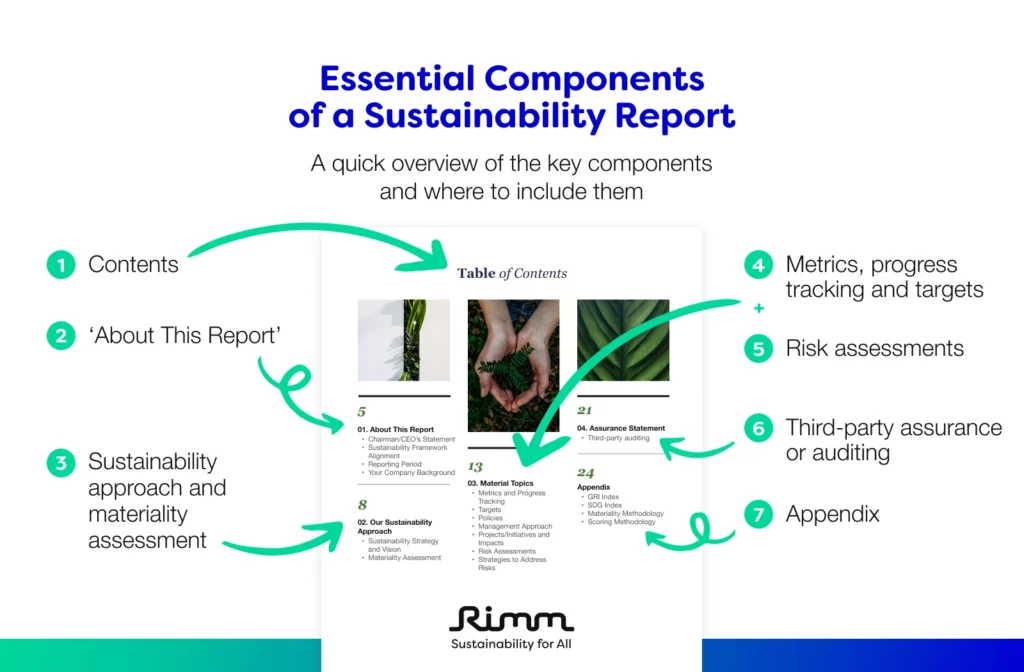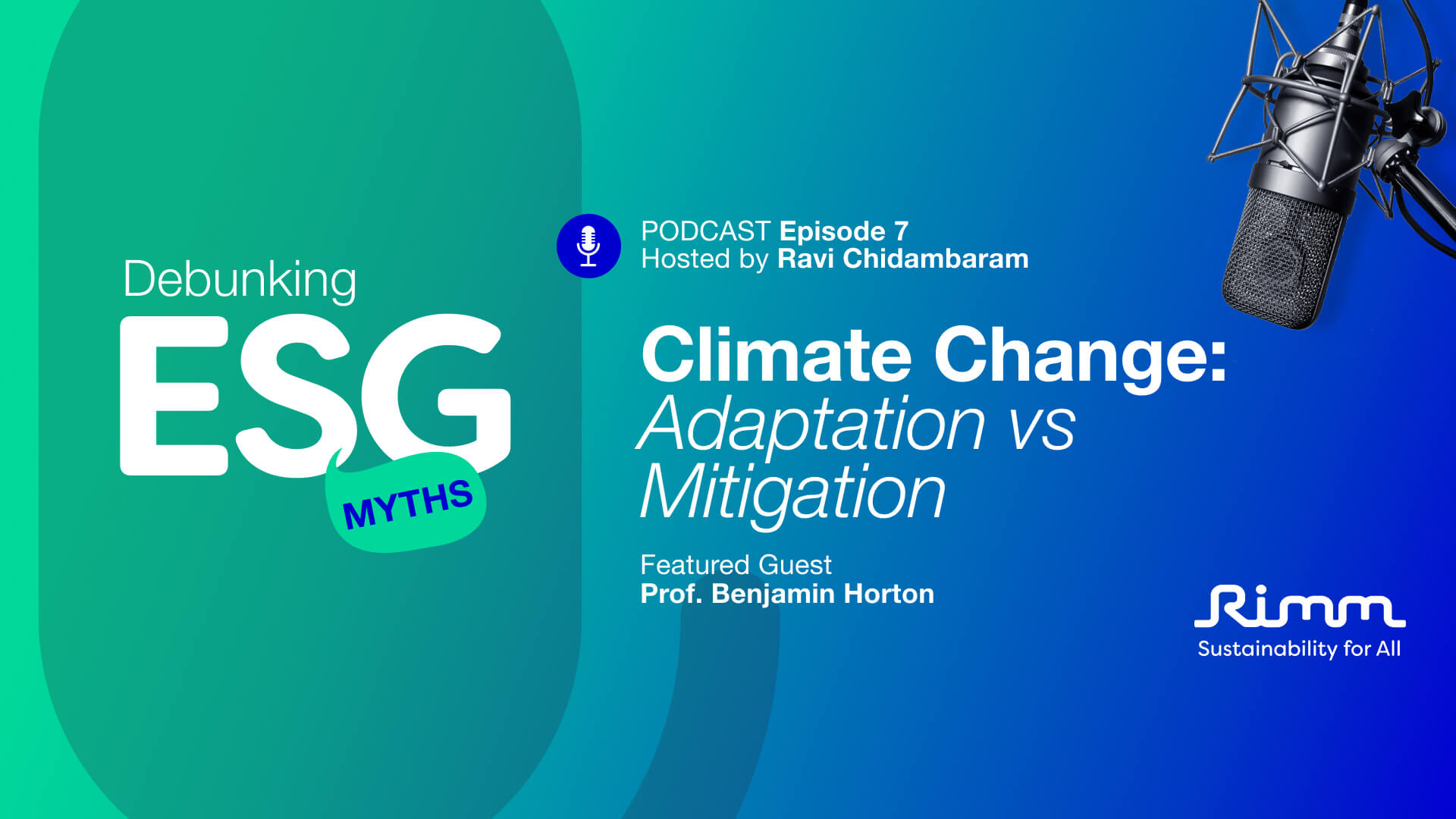A sustainability report is an effective way to communicate your company’s commitment to sustainability. Find out about the essential components of a sustainability report below!
Publishing a sustainability report is a great way for companies to disclose their ESG practices.
Sustainability reporting in the corporate setting is an important factor to improve a company’s green initiatives and its relationship with investors and clients in building trust, in line with stakeholders’ demand for transparency and accountability.
With this increase in demand, many organizations can benefit from sustainability reporting, which helps make organizations’ decision-making processes more efficient and, in turn, enables them to reduce risk.
Whether you’re just beginning your own journey with sustainability or looking to improve your sustainability report, it definitely helps to know what the main components are.

Let’s dive into what each of these components entail!
Navigating through the report…
- Contents
A sustainability report covers a wide range of topics. The length and contents of the report will vary depending largely on the company size and industry. Having a clear contents page that highlights the main topics and sub-topics is a great way to provide readers with an overview of the scope of your sustainability report.
What is your report about?
- About This Report
This section of the report serves as the introduction, where companies can outline their company background, chairman’s/CEO’s statement and the framework(s) with which the report was generated. The chairman’s statement is vital as it communicates your company’s mission, purpose and commitment to sustainability. Stating your chosen sustainability framework and/or standard here clarifies from the beginning which guidelines your disclosures are in alignment with. Be sure to also state the reporting period as not all companies report within the same timeframe.
What are the relevant topics under sustainability to your company?
- Sustainability approach and materiality assessment
This next section should summarize your company’s main strategy and focus in terms of environment, social and governance (ESG). To ensure that your company reports on the most important sustainability topics relevant to your company and industry, include a materiality map, which you can obtain from conducting a materiality assessment. The results should rank the topics by significance, showing your stakeholders that you are focusing on issues that matter to them, which can also improve overall engagement.
How is progress measured, how is your company performing and what next?
- Metrics, progress tracking and targets
After identifying the material topics, the subsequent sections of the report should detail how well your company performed in these areas. Highlight your company’s progress and targets using the appropriate metrics and outline any policies and management approaches your company has in the reporting period. This is where you can also highlight any successful projects and initiatives related to any of your material topics that have made a positive impact on society. Try to be as detailed as possible to provide readers transparency and minimize any ambiguity that may give way to greenwashing! - Risk assessments
Taking it a step further, your performance evaluation should also include any risk assessments conducted by your company in the material topic areas. This encompasses the identification of climate risks, strategies to address these risks, and opportunities involved that could potentially affect your company in the short, medium and long term. Providing more context to your company’s preparedness for the future, helps to highlight your adaptability and resilience to stakeholders.
Has your report been verified?
- Third-party assurance or auditing
Once the above components are ready, you may wish to audit your report to boost your credibility. If your company has gone through an external review or validation process, include an assurance statement to provide verification on the accuracy and reliability of your sustainability report.
One last thing…
- Appendix
Finally, your report should include an appendix. In this section, be sure to include an index that clearly maps out each material topic disclosure to its topic disclosure reference in your chosen sustainability framework(s). This will help readers easily see how your reporting aligns with the chosen framework(s) and where the overlaps are. In addition, you may also choose to include any supplementary information on your report in the appendix, such as your materiality and benchmarking methodologies.
Want to know more about the benefits of good ESG Reporting?
Read our previous post on the ‘5 Key Benefits for Corporates Practicing Good ESG Reporting.’
Simplify Your Sustainability Performance & Tracking With myCSO
✅ Calculate your scope 1, 2 and 3 emissions instantly
✅ Gauge your company’s sustainability performance
✅ View your sustainability performance all from one dashboard
✅ Benchmark against industry peers
Enter your information below to book a demo with our team today.







